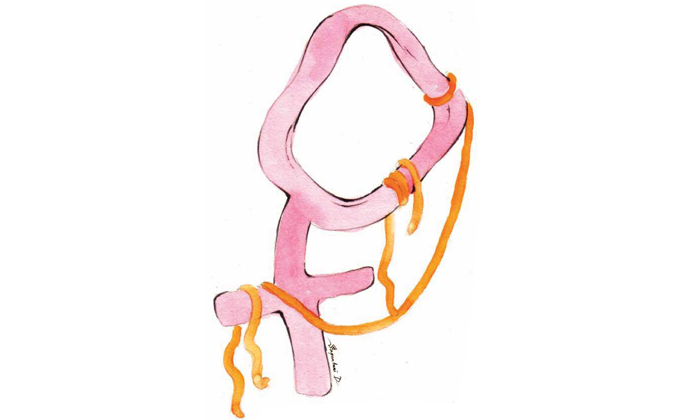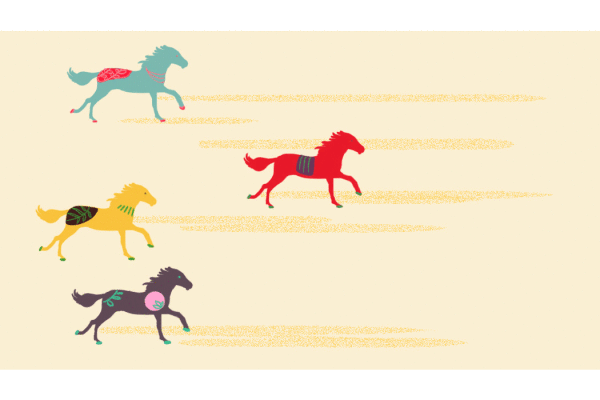Imagine my disappointment when I found out that I was not a unique individual with a unique recipe. Admittedly, the process of disillusionment was slow, as I gradually made friends with other students, and learned that they too were obsessed with Maggi, that they too had their “special” recipes that often involved the same ingredients as mine.
I eventually did learn to cook dal—and a handful of other foods—and my diet became less Maggi-centric. Recently, though, pressed for time, I cooked up a bowl of the famous noodles. As I was chomping on them, I glanced at the packaging, which featured “Me and Meri Maggi” stories, sent in by avid Maggi consumers. The first story featured a male professional who would feast on Maggi after a long hard day at the office. In the second story, a housewife recounts making Maggi for her husband and his friends, who showed up unexpectedly. She was taken by surprise, but thanks to the miracle of Maggi, she saved face and impressed her husband’s friends to boot. “Wow,” I thought. “Such a blatant reinforcing of gender roles. Little things like this—this is how patriarchy is maintained.”
One story even got metaphysical: “Maggi carved itself into our existence and etched itself permanently into our lives.”
I showed the offending text to my roommate, and he shrugged nonchalantly. “What are you making such a fuss about? Why are you so surprised? They’re marketing this to a certain audience. Of course it’s gonna reinforce the values of that audience.” Undeterred, I went to the Maggi website, where I learned that Maggi India is celebrating “25 years of joy.” On display was a whole treasure trove of “Me and Meri Maggi” stories, all sent in voluntarily by the doting public.
I knew Maggi had developed impressive brand loyalty, but I wasn’t expecting the outpouring of devotion contained on the website. In addition to the sheer quantity of the stories, there was a genuineness that would be quite touching if it weren’t in reference to a mass-produced noodle. One story even got metaphysical: “Maggi carved itself into our existence and etched itself permanently into our lives.”
But the stories weren’t the culturally conservative narratives I expected to find, given my initial encounter with the noodle packet. Instead, they showcased the “new” India: engineers, globe-trotting businessmen, nervous young lovers. (Sample text: “Since our relationship still exists, thanks MAGGI for being a catalyst for my relationship on my first date.”) Perhaps Maggi is so popular because it fits the image of the proudly harried urbanite: the student or young professional caught up with studies, with work, with friendship, with romance. Or the image of the modern mother, who has a job of her own, but finds time to cook up that snack her kids love. What is more, in the consumerist world of the student or white-collar worker, Maggi creates the simulacrum of choice, of individuality: I can add corn, you can add cheese, your friend can add chillies. Of course, we’re all buying our meal from the largest food company in the world. (Did I mention Maggi is owned by Nestlé, which also owns the dubiously “pure” Poland Spring water discussed last month?)
Maggi has also convinced us that it’s a healthy option. Just look at the slogan, in delightful Hinglish: “Taste Bhi Health Bhi.” In addition to the atta variety, there is now a new line of multi-grain (excuse me, “Multigrainz”) flavours. Advertisers know that we fear the health consequences of the glut of fast foods in the market. They also known that health is big business; to meet the media’s increasingly unrealistic standards of beauty, we have to eat right. (Helpful advice from the “Tips” section of the Maggi website: “If on a weight-loss diet, substitute cheese with a home made paneer made with skimmed milk, which is low fat and rich in protein as well.”) But, with our fast-paced lives, where’s the time to cook healthy meals? Maggi offers us a solution: all of the health, none of the time. Nutrition for the Internet age!
Maggi offers us a solution: all of the health, none of the time. Nutrition for the Internet age!
But the celebrated food writer Michael Pollan has taught me to be wary of such health claims. His simple rule for responsible eating is: “Eat food. Not too much. Mostly plants.” The problem with Maggi is that, by Pollan’s rulebook, it isn’t quite food. It’s more an “edible foodlike substance.” Pollan suggests that we only eat packaged foods with a maximum of five ingredients. The noodles part of Maggi barely qualifies (wheat flour, palm oil, salt, wheat gluten & guar gum). A sample Chatpata Tastemaker™ packet is way off the charts, with thirteen ingredients, including mysterious E150d and E627. The first one, described on the Maggi packet just as “caramel,” is in fact made by controlled heat-treatment of sugar with compounds containing ammonia and sulfite. E627, glossed by Maggi as “flavour enhancer,” is disodium guanylate, which often goes along with MSG to create a more savoury taste. Although MSG is not listed on the ingredients, it is in fact present in the form of hydrolysed protein.
As Pollan points out, the packaged foods that shout most loudly about their health benefits are the ones we should be most wary of. (“When Kellogg’s can boast about its Healthy Heart Strawberry Vanilla cereal bars, health claims have been hopelessly compromised.”) To be honest, this doesn’t mean I’ll stop eating Maggi. Two minutes is tough to beat. But at least I won’t delude myself into thinking that I’m asserting my individuality or that I’m actually eating food.















